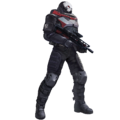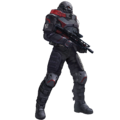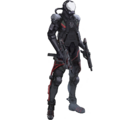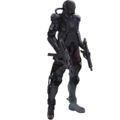Union of Rossartrist Nations Coalition
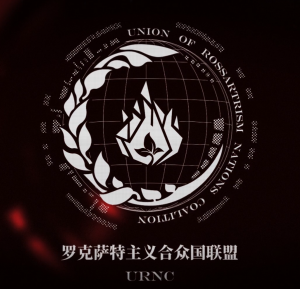
The Union of Rossartrist Nations Coalition[Notes 1], shortened Rossartrist Coalition[1] or URNC (联合政府罗克萨特主义合众国联盟, shortened 罗联[2]), is an alliance of nations formed under the influence of the Promethean Rossartrists in 2064 after World War Three, following the doctrine of Rossartrism.[3][4]
Its core territory is the Eurasian continent, but it controlled most (but not all[3]) of the world, with the notable exception of Antarctica.[5] Among the nations absorbed by the URNC was the Neo-Soviet Union.[6][7][8] The URNC is credited as the main proponent of the new world economy after the war, but political tensions with the Antarctic Union led to the First Antarctic War.[9] Due to their ideologies sharing the same source but having evolved in radically different directions, the AU called the URNC "pseudo-Rossartrists".[10]
They are the antagonist faction in Codename: Bakery Girl and Reverse Collapse: Code Name Bakery.
Organizations[edit]
Central Defense Bureau[edit]
The CDB is the URNC's supreme military command, under control of the central government since their foundation in 2064. It controls the sea, land, air and special operations military commands, as well as national security and external reconnaissance intelligence and Relic Technology research agencies.[11]
In 2092, the commander of the Eastern European Theater of the CDB was General Vasiliy Mitrovic.[12]
-
From right to left: emblems of the URNC Armed Forces, URNC Army, URNC Navy and URNC Air Force (not shown in-game).
URNC Army[edit]
The land military of the URNC consists of foot soldiers and various armored and autonomous vehicles that are track-mounted, rail-mounted, legs-mounted or hovering. Armored units tend to be named after Slavic mythological beings.
Tactical Dolls of sixth generation formed the main frontline infantry of the URNC in the 2090s. Dolls field commanders equipped with advanced command modules could make flexible decisions, while remaining under the authority of a human frontline commander.[13] They were seemingly only deployed in active war fronts, as defensive garrisons during operation Bakery were fully manned by humans.
The following units and materiel were observed during operation Bakery in Northern Caucasus in 2092:
-
Scout.
-
Senior Scout or Grenadier.
-
AT-77U rifle.
-
Commando.
-
Senior Commando.
-
AT-77 rifle.
-
Sniper.
-
Senior Sniper.
-
SVP-79 precision rifle.
-
Medic.
-
Senior Medic.
-
Captain Thian, the “Bloody Angel”.[14]
-
MPN-6 injector.
-
Commander.
-
Senior Commander.
-
PLN handgun.
-
Machine Gunner.
-
Senior Machine Gunner.
-
KG-11 heavy machine gun.
-
Logistician.
-
RPT-83 machine gun.
-
RPM-2 rocket launcher.
-
Svarog fifth-generation main battle tank.[15]
-
Khors tank, piloted by the most elite soldiers.[16]
-
AA-03 Autonomous Mech.
-
AA-03-B4M Autonomous Mech (an AA-03-B4W variant was used on the Asian Theater).[17]
-
AAX-05S experimental mech (requires a pilot).[18]
-
Simargl Autonomous Tracker.
-
Porevit Autonomous Tracker.
-
Marzanna UAV.
-
Filins UAV.
-
Devana fixed cannon.
-
Jarilo rail-mounted patrol tank.[19]
-
Diberg double rail-mounted battle fortress.
-
Roadblock.
-
Energy charger.
-
Defense installation.
-
Wide Area Electronic Jammer against AU equipment.[20]
Werewolf Commando Team[edit]
Originally established as an anti-Shrike response team to handle incidents caused by the novel bioweapon,[21] the Werewolves distinguished themselves during the Warszawa Incident of 2088 and evolved into the most elite fighting force of the URNC Army,[22] considered the equals of the AU's TASA.[23][24]
The Werewolves are selected through a grueling process and equipped with the URNC Army's best gear, most notably an advanced thermoptic camouflage that led to the adoption of ambush as their prime method of engagement.[22] Senior members of the Werewolves are described as “the pinnacle of the URNC's military might.”[25]
Known Werewolves designations include:
- Skull: Equipped with heavy assault armors and SDS rifles.
- Nightmare: Senior rank of Skull soldiers. The soldiers Tangieu and Eugene belonged to this group.
- Cyclone: Equipped with light armor for increased mobility and dual PPC-86 submachine guns.
- Thunder: Senior rank of Cyclone soldiers. The soldiers Xion, Break and Aengus belonged to this group.
In 2092, Captain Oleg Carolin and Vice-Captain Sugar led the Werewolves 3rd detachment during operation Bakery.[26][27][24] Oleg used similar gear to Skull and Nightmare units while Sugar used armor similar to Cyclones and Nightmares while using SSR-4B submachine guns.
-
Skull soldier.
-
Nightmare soldier.
-
Cyclone soldier.
-
Thunder soldier.
-
SDS rifle.
-
PPC-86 submachine guns.
URNC European Emergency Response Division[edit]
A quick-response agency operating in Europe. They conducted the bombardment mission that destroyed Warsaw during the Warszawa Incident of 2088.[28]
Non-Military Forces Administration[edit]
The Non-Military Forces Administration (非军事力量管理局), or NOMFA,[29] is an agency of the URNC regulating non-state armed groups such as private military companies.[30] Kalina and Kryuger joined this organization after the disbandment and reorganization of Griffin & Kryuger[31] in 2065, the same year the PMC was restructured.[8] The “Agreement” that prevented the Griffin Dolls from making contact with the Commander originated from NOMFA.[32]
History[edit]
Ten-Years Honeymoon[edit]
The birth of the Coalition in 2064[3][4] helped restart the world economy after World War Three.[9] They created twin AIs named Heli and Iphi to serve as a centralized information gathering and decision-making system.[33] In 2066, work began to merge the government of the Neo-Soviet Union in the URNC.[8]
On 19 April 2067, the URNC and the NSU signed in Geneva a protocol to jointly restore the contamination zones of Europe. Working eastward from the Szczecin-Berlin-Nuremberg-Munich-Zurich-Geneva line, the URNC used their Ark-class seeding platforms to conduct their Lazarus plan. At the same time, the NSU advanced westward from the Vilnius-Minsk-Kyiv-Odesa line, working with their mobile isolation walls and purification towers to implement their New Westward Movement series of five-years plans. The plan was for the URNC and the NSU to eventually meet in the Carpathians and collaborate on cleaning the local Red Zones, then the remaining Black Zones before applying the methods developed in Europe to Africa first, then Oceania, South America, Asia, North America and finally Antarctica (the low position of North America is consistent with the Rossartrist view of the region as the core of opposition to their doctrine). The plan came in effect on 2 July 2067.[34] The protocol also determined new definitions for the standard color code used to represent contamination levels.[34][35]
Contamination zones still existed in certain regions in the 2090s and the URNC continued to work with third parties such as the Eastern Contamination Control Association.[36] Dolls played a key role in decontamination work, as well as in the fully automated industries of the URNC. They became an integral part of the URNC's society, which supported rapid development of their technology into sixth-generation Dolls in the 2090s.[13] By 2070, most of the safety zones in South America, Europe, and northern Asia were integrated into the URNC,[8] the Neo-Soviet government is already considered to have been merged by 2071[6] and other documents from the 2070s refer to Eastern Europe as the “Neo Soviet Region” of the URNC.[37]
The URNC was also the first organization after WW3 that managed to implement effective refugees programs to evacuate populations from Yellow Zones to Green Zones starting in the 2070s, supported by the gradual elimination of the conservative and xenophobic factions that had emerged in response to the flawed policies attempted in the 2060s.[1] The stabilization of global affairs due to the URNC's influence led to the end of the golden age of PMCs as governments stopped outsourcing national security issues to these companies: small PMCs naturally disbanded while governments forcibly downsized larger ones, notably Griffin & Kryuger, and put them under the purview of their Non-Military Forces Administration. Former PMC members, including the Commander, turned to bounty hunting in contamination zones, opening the age of bounty hunters and leading to the creation of B.R.I.E.F.[30]
Rossartrist Monthly is a publication appearing extensively in the Confidential Files and the Secret Documents, which provides reviews of historical events (albeit probably biased). The earliest article from Rossartrist Monthly is dated 2073.[38]
During the Adelaide Tanker Incident of 2075, Hollow City's military responded to the distress signal of a URNC oil tanker hijacked by pirates in Australian waters. The URNC thus became the first nation to open diplomatic relations with the newly re-opened Hollow City.[3][39][4][Notes 2][Notes 3] The period of technology transfer from the Antarctic to the URNC became known as the Ten-Years Honeymoon. The new technologies helped cities closest to the South Pole to become prosperous again thanks to recoil-decay barriers, 300 meters tall particle neutralizing systems used to decontaminate areas touched by the Collapse Fluid clouds or struck by nuclear warheads. The system was expensive to deploy, as it needed one generator every 2 kilometer in a closed loop, but was deployed successfully in important sectors.
Nevertheless, relations gradually soured as the citizens of the Coalition realized the classical socialism of Hollow City was not compatible with Rossartrism, that their advanced technology could be a potential threat, and that their radically different living environment made them culturally incompatible. The Rossartrist populace eventually demanded for harsher political measures against Hollow City.
Tensions culminated in 2078 when several fringe countries of the Coalition left to become allies of Hollow City, forming the Antarctic Union, and a definitive threat in the eyes of the Coalition. The Union attempted to take a non-aggressive stance and withdrew all personnel and ordnance from countries still in the Coalition's territory, but the sudden stop in investments and bilateral trade only worsened the Union's image. The Coalition later passed the Antarctic Limitation Act, containing numerous discriminatory laws against citizens of the Union, such as denying them the right to own land, restricting movements between Union territory and core Coalition countries, economic barriers to change the trade deficit in favor of the Coalition, and restricting the use of Union currency inside the Coalition. The Union reacted by calling its citizens to return to Union territory, which was also condemned by the Coalition.[9]
The Three Goddesses project launched in 2078 as a collaboration between Coalition and Union scientists produced three viable test subjects. When the project fell through due to political tensions in 2085, the Coalition retained control of subject Noylu, and searched for the whereabouts of the lost subject Jefuty.[40]
First Antarctic War[edit]
In July of 2089, young Antarcticans living in a fringe country of the Coalition threw rocks at Coalition police officers who had locked down their homes, prompting the officers to use lethal force. Other Antarcticans in the city started a riot, and soon large-scale civil conflicts erupted between Antarctican citizens and radical Coalition groups in other Coalition fringe countries. The Coalition military intervened to suppress and arrest the Antarcticans, to which the Union replied by staging its own military intervention.[9]
In September 2089, the Union military launched operation Snake Killer,[9][4] a preemptive strike in Coalition territory in an effort to protect its citizens, making the first move in the First Antarctic War. At the time, the Coalition thought nothing of the war declaration as they considered a congregation of only 30 million people to be incapable of posing any threat, but the Coalition army soon realized that Collapse Technology enabled the Union troops to hold disproportionate advantages over their forces. The attempt of naval blockade against Antarctica resulted in devastating losses to the Coalition fleet, and the relatively non-aggressive stance of the Union probably saved the Coalition from one-sided devastation. On its own fringe territories, the Coalition kept the Union at bay with random saturation bombardments of their transfer bases by large quantities of long-range guided missiles, and Union troops refused to launch counter-attacks deep in enemy territory to neutralize these strikes, so the war became a stalemate.[9]
Before the war, the URNC's influence extended from its core in the Eurasian Security Zone to the southern reaches of Africa and South America, but these borders quickly shrunk during the Union's devastating campaign. The URNC could not evacuate most of its citizens, who became trapped in territories now under the control of interim governments backed by the AU. Civil unrest soon appeared due to the deep ideological divides between the populations of the AU ad the URNC. With the few troops of the Union focused on the war front, law and order was enforced by Union militias. Meanwhile, the URNC led its own hunt for political dissidents in the White Zones, mostly people who had supported the Union during the Honeymoon Period. In mid-2092, in response to the mass exodus of Coalition populations from South America and South Africa toward the northern hemisphere, the AU and the URNC cooperated with the Global Rescue Foundation to open humanitarian corridors. The GRF also assisted refugees illegally attempting to exit Eurasia to reach Antarctica, which was not approved by the URNC. By the end of the war, 1.8 million people had migrated northward, and an estimated 60,000 southward.[5]
It was painfully clear to the Coalition that Collapse Technology was necessary for them to rival with the Union, and the ongoing moratorium on relics site research was lifted as investments in theoretical physics increased. To hasten critical discoveries to less than a year, the Coalition decided to use the most direct method at their disposal: perform reverse-engineering on activated relics. This would require a complete genetic sequence from a specimen of GAVIRUL.[9] However, Noylu could not activate the relics, so the search for the lost subject Jefuty intensified.[40] The Coalition located and successfully recovered Jefuty in the Caucasus in 2092, foiling the Union's own capture plan, operation Bakery.[41] Two years later, the Union launched operation Tinder to recover Jefuty from the Bear's Den relics site base. When the local Coalition commander ordered the use of Assault Artillery systems within the relics site, an event similar to the one that had led to the First Beilan Island Incident occurred, and the Union and Coalition high commands had to collaborate to avoid a new apocalyptic disaster. Sacrificing their career, the Coalition government leader authorized the Union air force to deploy a missile containing a molten plutonium payload to utterly destroy the Bear's Den.
The high cost of operation Tinder for both factions prompted the new Coalition head of government to enter peace talks, and a ceasefire was signed in 2094.[42] Proactive intelligence work continued nevertheless and both factions were implicated in the Second Beilan Island Incident.[43]
Notes[edit]
- ↑ 联合政府罗克萨特主义合众国联盟 was first translated “Union of Rossartrist States” or “Rossartrist Union” by fans. The official translation on the English Reverse Collapse: Code Name Bakery Steam page used to be “Union of Rocksatterism Nations Coalition”, based on the original pronunciation of 罗克萨特 (luó kè sà tè). In the English trailer for Reverse Collapse: Code Name Bakery, the sigil of URNC reads “Union of Rossartrism Nations Coalition”. “Rocksatterism” also used to appear on the sigil in the trailer of the Chinese Steam page, but the sigil in the trailer on Sunborn's official website used “Rossartrism”. The final in-game version uses “Rossartrist”.
- ↑ The date of the tanker incident has been fixed to 2075 in Reverse Collapse: Code Name Bakery's intro movie, but parts 4 and 5 of the first Confidential Files contained incompatible statements relating to the timeline of the tanker incident:
- It took place 20 years after the start of World War Three, which places it in 2065.
- It took place 50 years after work had begun on the Antarctic relics site, which places it on 2073.
- It took place 10 years prior to the end of the Ten-Years Honeymoon, which presumably ended in 2078 and places the tanker incident in 2068.
- ↑ The first Confidential Files originally placed the tanker incidents in Northern Australian waters. This is contradicted by Reverse Collapse: Code Name Bakery which places the incident near Adelaide in Southern Australia, a location that is more logical considering its greater proximity to Antarctica.
References[edit]
- ↑ 1.0 1.1 Reverse Collapse: Code Name Bakery, Secret Documents#The Establishment and History of the Rescue Foundation
- ↑ Weibo - Factions of Girls' Frontline 2
- ↑ 3.0 3.1 3.2 3.3 The Art of Girls' Frontline Vol.1, Confidential Files, part. 4
- ↑ 4.0 4.1 4.2 4.3 Reverse Collapse: Code Name Bakery, intro movie
- ↑ 5.0 5.1 Reverse Collapse: Code Name Bakery, Secret Documents#Summary of the Antarctic War Situation
- ↑ 6.0 6.1 Reverse Collapse: Code Name Bakery, Secret Documents#Speculation on the Decline of Religions
- ↑ Reverse Collapse: Code Name Bakery, Secret Documents#Inner Caucasus Theater Unit Deployment – Zones A & B
- ↑ 8.0 8.1 8.2 8.3 GFL2 Loading Screens
- ↑ 9.0 9.1 9.2 9.3 9.4 9.5 9.6 The Art of Girls' Frontline Vol.1, Confidential Files, part. 5
- ↑ Reverse Collapse: Code Name Bakery, Chapter 3, Act 4
- ↑ Reverse Collapse: Code Name Bakery, Reverse Collapse Worldview#Central Defense Bureau
- ↑ Reverse Collapse: Code Name Bakery, Reverse Collapse Worldview#Vasiliy
- ↑ 13.0 13.1 Reverse Collapse: Code Name Bakery, Secret Documents#Application of Doll Technology in the Late 90s
- ↑ Reverse Collapse: Code Name Bakery, Thian unit description
- ↑ Reverse Collapse: Code Name Bakery, Svarog unit description
- ↑ Reverse Collapse: Code Name Bakery, Khors unit description
- ↑ Reverse Collapse: Code Name Bakery, Chapter 4, Treacherous Road
- ↑ Reverse Collapse: Code Name Bakery, AAX-05S unit description
- ↑ Reverse Collapse: Code Name Bakery, Jarilo unit description
- ↑ Reverse Collapse: Code Name Bakery, Wide Area Electronic Jammer unit description
- ↑ Reverse Collapse: Code Name Bakery, Reverse Collapse Worldview#Shrike Cell
- ↑ 22.0 22.1 Reverse Collapse: Code Name Bakery, Reverse Collapse Worldview#Werewolf Commando Team
- ↑ Reverse Collapse: Code Name Bakery, Chapter 3, Act 2
- ↑ 24.0 24.1 Reverse Collapse: Code Name Bakery, Oleg unit description
- ↑ Reverse Collapse: Code Name Bakery, Special Forces - Nightmare and Special Forces - Thunder unit descriptions
- ↑ Reverse Collapse: Code Name Bakery, Chapter 2, Act 7
- ↑ Reverse Collapse: Code Name Bakery, Sugar unit description
- ↑ Reverse Collapse: Code Name Bakery, Reverse Collapse Worldview#Warszawa Incident
- ↑ Girls' Frontline 2: Exilium, Rhapsody Quartet MS-1-1
- ↑ 30.0 30.1 GFL2 official website, “Griffin & Kryuger”, “Private Military Contractor” & “B.R.I.E.F.”
- ↑ Girls' Frontline 2: Exilium, SL-4-1
- ↑ Girls' Frontline 2: Exilium, Dusty Journal#Mysterious Message
- ↑ Girls' Frontline 2: Exilium, Classified Briefings#Words of the Enlightened
- ↑ 34.0 34.1 Girls' Frontline 2: Exilium, Classified Briefings#Development Agreement Archived Files
- ↑ Reverse Collapse: Code Name Bakery, Reverse Collapse Worldview#Contamination Zone
- ↑ Reverse Collapse: Code Name Bakery, Reverse Collapse Worldview#Eastern Contamination Control Association
- ↑ Girls' Frontline 2: Exilium, Classified Briefings#Record of the Environmental Analysis in the Sebeș Area
- ↑ Reverse Collapse: Code Name Bakery, Secret Documents#Investigation into the Origin of Religions
- ↑ Reverse Collapse: Code Name Bakery, Secret Documents#Radiation Sickness Treatment Report
- ↑ 40.0 40.1 The Art of Girls' Frontline Vol.1, Confidential Files, part. 6
- ↑ The Art of Girls' Frontline Vol.1, Confidential Files, part. 7
- ↑ The Art of Girls' Frontline Vol.1, Confidential Files, part. 8
- ↑ The Art of Girls' Frontline Vol.1, Confidential Files, part. 9
| Lore topics |
|---|


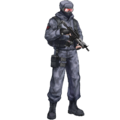
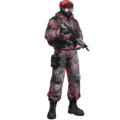

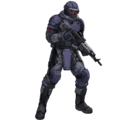
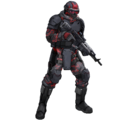

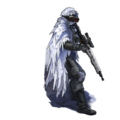
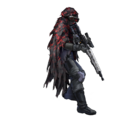



![Captain Thian, the “Bloody Angel”.[14]](/images/thumb/6/64/RC_URNC_Boss_Medic.png/120px-RC_URNC_Boss_Medic.png)


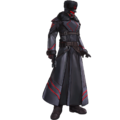

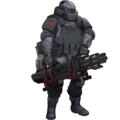
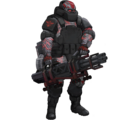




![Svarog fifth-generation main battle tank.[15]](/images/thumb/a/a6/RC_URNC_Svarog.png/120px-RC_URNC_Svarog.png)
![Khors tank, piloted by the most elite soldiers.[16]](/images/thumb/f/f3/RC_URNC_Elite_Svarog.png/120px-RC_URNC_Elite_Svarog.png)
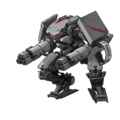
![AA-03-B4M Autonomous Mech (an AA-03-B4W variant was used on the Asian Theater).[17]](/images/thumb/1/1d/RC_URNC_Elite_AA-03.png/120px-RC_URNC_Elite_AA-03.png)
![AAX-05S experimental mech (requires a pilot).[18]](/images/thumb/a/a3/RC_Boss_Mecha.png/120px-RC_Boss_Mecha.png)
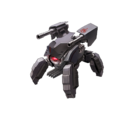
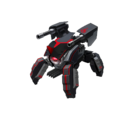


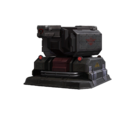
![Jarilo rail-mounted patrol tank.[19]](/images/thumb/d/df/RC_URNC_Jarilo.png/120px-RC_URNC_Jarilo.png)

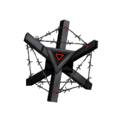
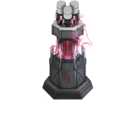

![Wide Area Electronic Jammer against AU equipment.[20]](/images/thumb/b/b0/RC_Jammer.png/120px-RC_Jammer.png)
